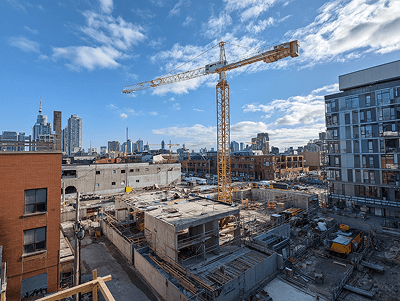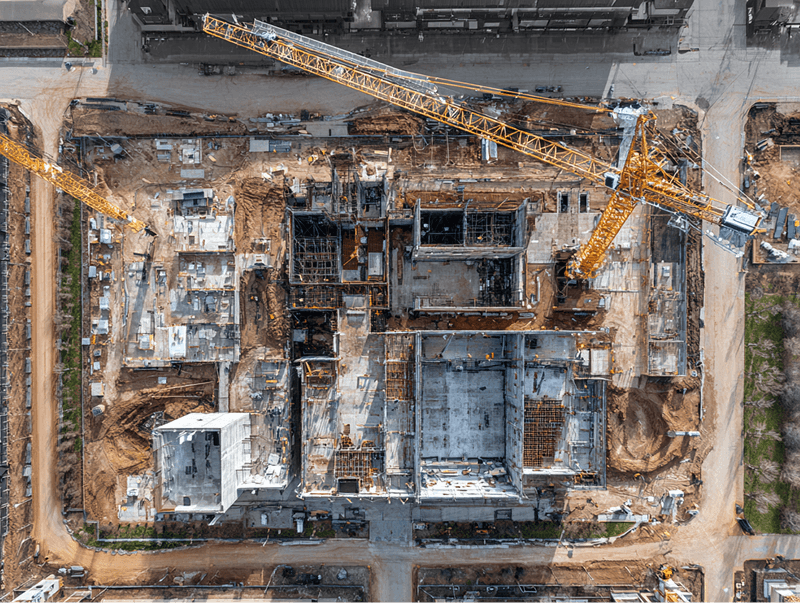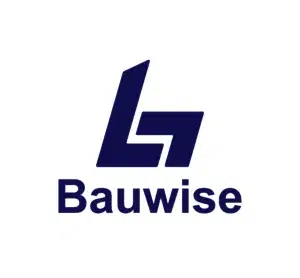Every day, countless construction sites operate across the globe — from highways and residential developments to industrial megaprojects. Construction is an essential part of the global economy, projected to reach $16.1 trillion by 2030.
Major international players dominate the global market and drive its growth. Deloitte’s Global Powers of Construction report says that in 2024, just the Top 100 companies made $1.978 trillion in sales. Most of this revenue came from firms based in China, Japan, the United States, France, Spain, South Korea, and the United Kingdom.
Behind this vast industry lies a crucial mechanism that starts every major project — construction tendering. Each year, governments and private organizations issue tens of thousands of construction tenders worldwide. The goal is to find partners who can deliver projects safely, on time, on budget, and to the required quality.
Tendering defines who wins the work, how project owners allocate resources, and how the selection process runs. In a market where margins are tight and competition is global, mastering the process offers a clear strategic advantage.
This article explains the key elements of construction tendering — definitions, stages, documentation, bidding, and more. It also explores construction procurement, automation, and how digital tools are reshaping bid management. At the end, you’ll find a checklist of best practices for winning construction bids.
Table of Contents
1. Understanding Construction Tendering: The Foundation of Every Major Construction Project
Before diving deeper, let’s define what construction tendering actually means. First, we’ll look at the definition, tender types, and how the overall process works. These fundamentals provide the foundation to understanding its role in construction procurement and project management.
1.1 What Is Construction Tendering?
Construction tendering is a formal process used to solicit, evaluate, and select bidders (tenderers) for a construction project. It includes main contractors, subcontractors, suppliers, and technical specialists. Project owners can issue tenders for the entire project or its specific work packages. They then collect bids from all qualified participants.
Tendering bridges project planning and contract execution. It structures the key commercial stages — bidding, evaluation, and contract award — into one coordinated process. Tendering provides a transparent and standardized framework for fair competition. In practice, it defines how project owners set requirements, issue documentation, and evaluate offers using predefined technical, financial, and compliance criteria.
As construction projects grow more complex and regulations tighten, tendering must remain efficient, transparent, and well-coordinated. The process helps project owners find bidders capable of meeting scope, quality, and budget requirements. Accountability and risk control are essential factors in the selection process.
1.2 Construction Tendering Methods and Stages
Construction projects use several tendering methods, depending on the project’s scope, complexity, and required level of competition. Each method defines how project owners invite, evaluate, and select bidders.
- Open Tendering – Any qualified bidder can submit a proposal in response to a public notice. This method maximizes competition and transparency but requires significant resources to manage and evaluate submissions.
- Selective Tendering – Only pre-qualified or invited bidders can participate. These bidders are typically chosen from a list of approved suppliers, framework agreements, or companies with proven past performance. This method reduces administrative effort and ensures that only capable bidders compete, often improving bid quality.
- Negotiated Tendering – The project owner negotiates directly with one or more contractors. This method is typical for specialized, high-risk, or time-sensitive projects where collaboration and trust are essential.
Project owners can conduct these tendering methods as multi-stage processes.
- Single-Stage Tendering – Bidders submit all design information and pricing in one step. It suits projects with a clearly defined scope and specifications.
- Two-Stage Tendering – Project owners select a preferred bidder based on preliminary proposals in the first stage. They then refine pricing and design collaboratively before final submission. This method supports early contractor involvement and reduces risk in complex builds.
Each tendering method balances competition, cost certainty, speed, risk, and control differently. The chosen approach should align the tender strategy with the project’s delivery model and overall risk appetite.
Read also: Cost Uncertainty in Construction: The Impact on Quantity Surveying and Financial Control
1.3 Construction Tendering Framework
Although procedures vary between countries, organizations, and contract types, many tenders follow a standardized sequence. This framework keeps the process transparent, comparable, and accountable. Open tendering skips the pre-qualification stage and begins directly with the Invitation to Tender (ITT). Negotiated methods, on the other hand, involve direct selection and contract discussion.
The core selective tendering stages typically include:
- Tender Pre-Qualification Questionnaire (PQQ) – Project owners screen bidders for technical competence, financial stability, safety record, and relevant experience. This step verifies whether they are eligible to participate in the tender.
- Invitation to Tender (ITT) – The project owner issues detailed documentation that specifies project scope, technical requirements, timelines, contractual terms, and tender submission requirements.
- Bid Preparation and Submission – Bidders analyze the ITT, and prepare cost estimates, schedules, and compliance documents. At this stage, it is crucial to follow all ITT requirements and submit bids before the deadline.
- Tender Evaluation – The project owner reviews all bids against predefined technical, financial, and compliance criteria. They often use a weighted scoring model to identify the most economically advantageous offer.
- Contract Negotiation and Award – The project owner then selects the preferred bidder. In the final stage, both parties clarify and negotiate contract terms, including pricing and delivery obligations. The project owner then awards the contract and execution begins.
This framework ensures fair selection based on verified data. It also keeps project budgets, quality, and risk objectives aligned. Together, these stages form the core of the construction procurement process.

Read also: Understanding the 5 Types of Construction Project Costs
2. Inside Construction Tendering: The Core Concepts and Processes
While the tendering process generally follows a standard framework, understanding its main components is essential to effective navigation. This section explains the core concepts and processes of construction tendering. It covers procurement, bidder selection, tender documentation, evaluation models, common challenges, and process automation. Together, these elements form the foundation of efficient, transparent, and competitive tendering.
2.1 Construction Procurement: How Projects Source and Manage Suppliers
Construction procurement is the structured process of sourcing materials, contractors, and specialist services. Its goal is to ensure that selected bidders deliver their work on time, within scope, and on budget. It forms the foundation of every project — both commercial and operational. Project owners define work package pricing, allocate responsibilities, and oversee overall delivery, selecting contractors, subcontractors, and suppliers accordingly.
How bidders enter the process depends on the chosen tendering method. Procurement teams then manage supplier relationships through evaluation, performance tracking, and compliance monitoring to ensure consistency across all project stages.
Effective construction procurement ensures cost efficiency, regulatory compliance, and alignment across project phases. Quantity surveyors play a critical role — preparing bills of quantities, managing tender documentation, and evaluating bids to verify cost accuracy and scope alignment. Procurement decisions directly influence tender outcomes, project risk, and financial performance, making it one of the most strategic functions in construction management.
2.2 Pre-Qualification and Construction Vendor Selection: Ensuring Only Qualified Bidders Compete
Pre-qualification is the first formal step in selective or restricted tendering. It shortlists contractors, subcontractors, or suppliers based on their capability to meet project requirements. The process typically involves completing a Pre-Qualification Questionnaire (PQQ) — or, in some frameworks, a Selection Questionnaire (SQ). It assesses each bidder’s financial stability, technical capacity, HSE record, certifications, insurance coverage, quality management systems, and past project performance.
Pre-qualification takes place before the project owners issues an Invitation to Tender (ITT). This step ensures that only competent, low-risk bidders participate in the tendering process. Procurement managers and quantity surveyors oversee the evaluation, verify submitted documentation and conduct risk-based assessments. By applying a consistent evaluation framework, organizations reduce project risk, strengthen compliance, and improve tendering efficiency.
2.3 Construction RFQ vs RFI vs RFP: Understanding the Key Procurement Documents
Project owners manage communication with potential bidders through structured procurement documents — the RFI, RFQ, and RFP. These documents help gather information, confirm pricing, and formalize proposals. They are typically used before or as part of the formal tender process, especially in selective or negotiated methods. Open tenders, by contrast, usually begin directly with an Invitation to Tender (ITT).
- Request for Information (RFI) – is issued to gather insights on market capabilities, materials, or potential suppliers. It is sent before technical specifications are finalized.
- Request for Quotation (RFQ) – is used once project requirements are defined. This document requests pricing for specific materials, services, or work packages.
- Request for Proposal (RFP) — is issued when the project scope and design are developed in detail. With this document project owners invite complete technical and commercial proposals for execution.
Together, the RFI, RFQ, and RFP move the process from exploration to commitment. When applied at the right stage, these documents ensure comparable data, reduce delays and scope creeps, and strengthen procurement outcomes.
2.4 Construction Bidding: ITT, Tender Packs, and Bid Preparation
Once the project owner issues an Invitation to Tender (ITT), the process moves to formal bidding. The tender pack typically includes project drawings, technical specifications, bills of quantities (BoQ), and contractual terms. Bidders review the documentation, analyze requirements, and prepare detailed submissions covering pricing, schedules, and compliance. Accuracy, consistency, and met deadlines are critical at this stage.
Incomplete forms, unrealistic pricing, or missing documentation often lead to disqualification. Strong bidders maintain structured workflows, double-check quantities and rates, and ensure full alignment with ITT requirements. A disciplined approach improves bid quality, demonstrates credibility, and strengthens the bidder’s competitive position.
Read more: Master the Bid: Proven Strategies on How to Win More Construction Bids
2.5 Construction Tender Evaluation: Key Criteria and Decision Process
Once bids are submitted, they enter an evaluation process led by a panel of quantity surveyors, procurement specialists, and project managers. Assessments focus on three main criteria: technical, financial, and compliance.
- Technical evaluation — reviews proposed execution methodologies, resource allocation, and relevant past projects.
- Financial evaluation — compares pricing structures, cost realism, and overall value for money.
- Compliance review – verifies that each submission meets all mandatory ITT requirements.
Project owners often use weighted scoring models or evaluation matrics to ensure bid consistency and transparency. Common approaches include lowest-price tendering for straightforward projects, and the Most Economically Advantageous Tender (MEAT) — also known as Best Value Procurement (BVP) — for complex ones.
MEAT and BVP balance cost, quality, capability, and delivery reliability. Detailed evaluation records are critical to demonstrate fairness, support audit requirements, and justify award decisions.
2.6 Construction Contract: Post-Tender Negotiation and Award
Once the preferred bidder is identified, the post-tender stage begins. This stage focuses on clarifying the construction contract, conducting negotiations, and finalizing the award. It ensures all parties fully understand and agree on the commercial, technical, and legal terms before execution.
Negotiations may cover pricing adjustments, timelines, or risk allocation. Parties can clarify minor scope details as long as these do not alter the original tender intent. The goal is to finalize an agreement acceptable to both sides and protect the interests of the project owner, contractor, subcontractors, and key suppliers.
After negotiations conclude, the project owner issues a Letter of Acceptance (LoA) — also known as a Letter of Award — to the successful bidder. Both parties then finalize and sign the construction contract, with final project scope, work items, milestones, and payment terms clearly outlined — making it legally binding. In some cases, the project owner may issue a Letter of Intent (LoI) to authorize limited early works or mobilization before the full contract is signed.
Comprehensive documentation and strict version control establish accountability, prevent disputes, and ensure all stakeholders work from the latest approved contract. The final signed agreement must accurately reflect the agreed scope, price, and responsibilities.
2.7 Common Tendering Challenges in Construction: Delays, Errors, and Compliance Risks
Despite its structured framework, the tendering process in construction often faces recurring challenges that can compromise fairness, efficiency, and compliance. The most frequent issues include:
- Unclear communication between project stakeholders
- Manual data entry errors in cost estimates or bills of quantities (BoQs)
- Inconsistent bid submission formats
- Missed bid submission deadlines
These issues can lead to bid disqualification, disputes, project delays, or re-tendering. Large-scale construction projects are particularly exposed to compliance risks when documentation fails to meet audit, safety, or regulatory standards. Manual workflows and fragmented communication between parties amplify these risks by reducing transparency and traceability across tender stages.
To address these inefficiencies, many construction firms are adopting digital management systems that standardize communication and workflows, strengthen data control, and improve visibility across procurement activities.
2.8 Automation in Construction Tender Management: Streamlining Procurement Workflows
Automation in construction tender management replaces manual, document-heavy exchange with centralized digital workflows. Tender management teams can issue invitations, track bid submissions, manage approvals, and store records in one controlled environment. Automated versioning, audit trails, and deadline alerts reduce errors, missed requirements, and duplicated data entries.
These systems streamline administrative tasks and ensure that every tender submission is reviewed and approved by authorized users. Tender automation helps maintain process compliance across all stages, safeguards data integrity, and improves tender cycles. Beyond efficiency, automation builds accountability and consistency — serving as an essential step toward e-procurement adoption.
2.9 E-Procurement in Construction: Digital Tendering, ERP and Accounting Software Integration
While automation focuses on simplifying workflows, e-procurement takes it further. E-procurement — or digital procurement — extends automation into a fully integrated digital ecosystem. It connects tendering, evaluation, contract management, and financial control within one platform. This enables real-time collaboration, centralized data access, and audit-ready bookkeeping.
E-procurement systems synchronize budgeting, forecasting, and cost control, using integrated ERP and accounting software data. Advanced analytics allow project teams to track supplier performance, pricing trends, and procurement cycle times — supporting data-driven decisions. As construction continues to digitalize, e-procurement is becoming the new standard, creating a connected environment where tendering, budgeting, and cost management can operate as one unified process.

Read also: 8 Ways to Create a More Sustainable Construction Site
3. Checklist: Best Practices for Winning Construction Bids
In construction, winning bids demonstrate control, credibility, and a deep understanding of project scope. This means clear communication, strict compliance, precise documentation, and data-backed proof of performance, which can be achieved with following:
- Prioritize accuracy and transparency – Base estimates on verified quantities and realistic rates. Clearly document all assumptions and exclusions to prevent scope gaps or disputes. Evaluators look for logic and traceability behind every figure.
- Maintain full compliance – Follow submission formats, deadlines, and mandatory documentation exactly as defined in the Invitation to Tender (ITT). Procedural accuracy signals reliability and minimizes disqualification risks.
- Present a clear, professional submission – Structure documents logically and cross-check data across BoQs, drawings, and specifications. Consistency and clarity demonstrate attention to detail and make evaluation easier.
- Leverage digital cost management tools – Use construction cost management systems to track project performance, profitability, and cost control across your portfolio. Data from these systems demonstrates financial discipline and provides verifiable proof of performance.
Combining technical accuracy, compliance discipline, and data-backed control strengthens overal credibility and positions bidders as reliable, high-performance partners.
Conclusion: The Future of Construction Tendering
Construction tendering remains a complex yet critical process at the core of commercial, infrastructure, and residential projects. The industry has long relied on spreadsheets and manual administration, making tendering and procurement a management bottleneck. In a market where margins are tight and competition is global, leveraging digital tools and automation to tackle the issue has become a significant strategic advantage.
Both automation and e-procurement in construction are no longer optional enhancements; they’re now core to competitiveness. By digitizing every stage of the process — from pre-qualification to contract award — organizations streamline workflows, strengthen auditability, and build lasting confidence in procurement outcomes.
About the Author

Mikk Ilumaa
Mikk Ilumaa is the CEO of Bauwise, a leader in construction financial management software with over ten years of experience in the construction software industry. At the helm of Bauwise, Mikk leverages his extensive background in developing construction management solutions to drive innovation and efficiency. His commitment to enhancing the construction process through technology makes him a pivotal figure in the industry, guiding Bauwise toward setting new standards in construction financial management. View profile






